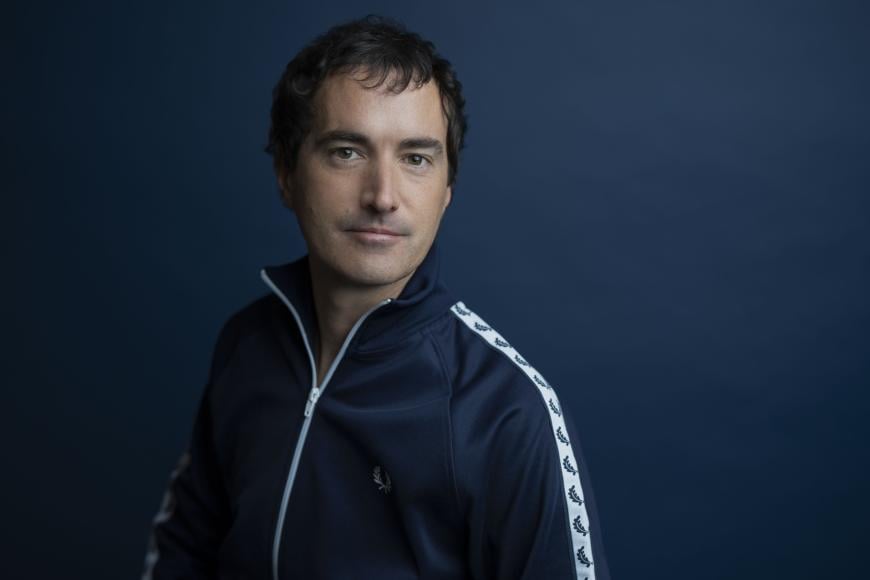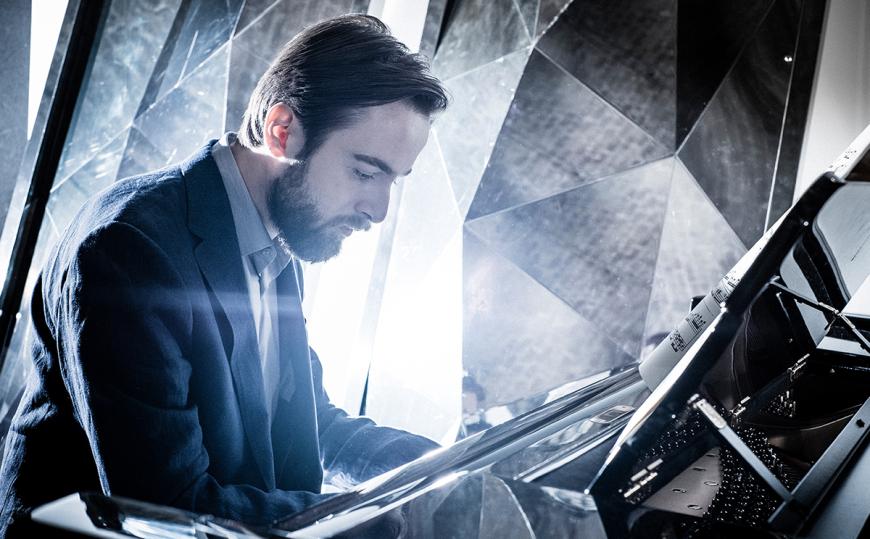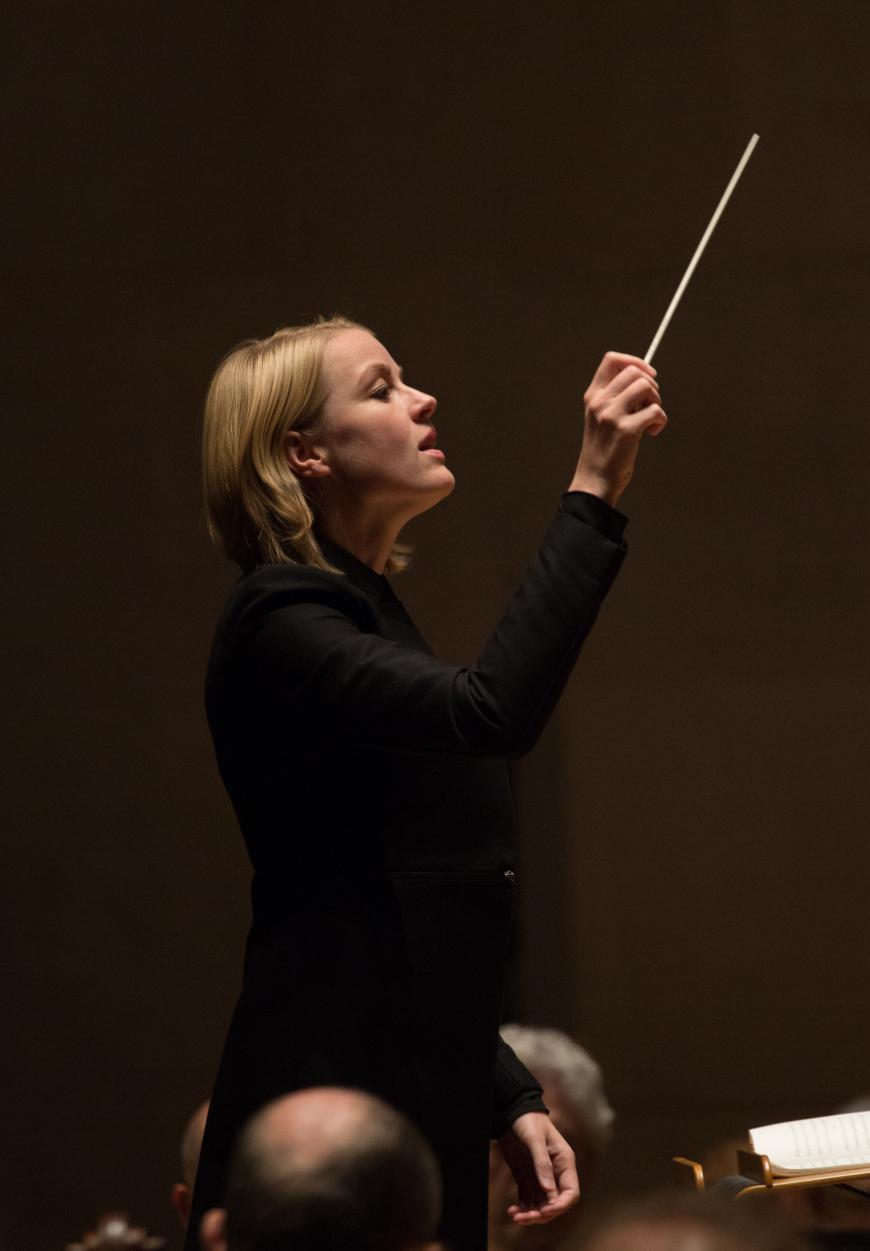
The fourth woman to conduct a San Francisco Symphony subscription concert at Davies Hall in the last month was Ruth Reinhardt, who turns 34 this year and is from Germany. She led a representative “Salonen-era” program featuring local premieres of two new works, one by a woman composer from Finland new to SFS and one by an American well known to the orchestra, plus a lesser-known symphony by Antonín Dvořák. I heard the performance on Friday, June 3.
Unquestionably, the highlight of the evening was the new Piano Concerto by Mason Bates, co-commissioned by the Symphony, featuring soloist Daniil Trifonov, for whom it was written. Bates’s music has been heard often at Davies since 2009, and at the Cabrillo Festival longer than that, so local listeners have had plenty of opportunity to follow the tremendous artistic growth of the now 45-year-old composer. This is his most assured and masterful work yet.
Concertos, especially piano concertos, can be tricky to write: Soloists may be drowned out or dampened by the orchestra. Bates is completely on top of his technique in this. His light, clean orchestration always allows the piano to come through clearly, even in loud or heavy passages.

This concerto is a 25-minute delight of unashamedly tonal composition, which earned enthusiastic applause. As pre-concert lecturer Sarah Cahill noted, we’ve come a long way from 40 years ago when John Adams was booed for ending a piano concerto with a series of major-mode chords. If Bates’s finale was a little overextended, it was pleasurable enough listening that this didn’t make much difference.
The three connected movements evoke a miniature tour through music history, a gimmick employed as early as two centuries ago by Louis Spohr. However, Bates is writing not pastiche but impressions, and listeners who find the concept distracting should ignore it; it will only confuse them. The first movement, evoking Renaissance and Baroque music, features shimmering and pizzicato strings (perhaps a touch of Boccherini here, of Renaissance dances there) and ends in big brass fanfares. Trifonov, hunched over the keyboard for his intricate fingering, gave light and busy work at least as reminiscent of cool jazz-pop pianism as of anything older.
In the slow second movement, the piano and orchestra play mostly separately. The music evokes the Romantic period without sounding much like it: The orchestra gleams with a light spectral quality intended to sound cheerful, while the pianist droops in the minor mode with sad quiet music of a soft-jazz cast tinged with Rachmaninoff. Gradually soloist and ensemble intersect and then merge in a melancholy but hopeful tune.
This leads to the finale, which depicts contemporary music: “fractured jazz” and “shattered minimalism,” in the composer’s words. This turns out to mean chugging rhythms and heavy percussive thumps in the orchestra, with fleeting downward runs and repeated intensifying phrases, in the manner of Hollywood movie music, in the piano.

Trifonov’s assured execution of and obvious delight in what he was playing, together with Reinhardt’s confident leadership of the orchestra, contributed greatly to the enjoyable result.
The concerto was preceded by a briefer piece by Lotta Wennäkoski, titled Om fotspår och ljus in Swedish (her native language), Of Footprints and Light in English, or alternatively Helsinki Variations. Reinhardt conducted this as if it were more continuous and broadly shaped than it sounded, though it was unceasingly interesting to hear. Wennäkoski is one of the great twittering composers, constructing her works out of odd mixed goods and non-tonal fragments, serving as a foil to Bates’s bold tonalism. There were spectral shimmers, rattles, knocks, telegraph signals of repeated notes, and other odd sounds of peculiar sonority. Bits begin to recur, and gradually the fragments start to coalesce if not cohere. There’s a final rising glissando in the strings and Wennäkoski signs off.
Halfway through, this procedure is abruptly interrupted for the strings to give an undigested presentation, in a tentative glow, of a lyrical theme from an unfinished opera by Ida Moberg (1859–1947), a reference to some work composed in Helsinki before 1945 having been a requirement of Wennäkoski’s commission from the Helsinki Philharmonic. Some of the work’s fragments also allude to this theme, but if the listener doesn’t know it thoroughly, then the references mean no more than the implications in the Bates.
The second half of the concert was occupied by Dvořák’s Symphony in F Major, Op. 76, a relatively early work despite its high opus number (he was 33). This is his Fifth Symphony in actual order of composition, but it’s the first-written one he cared to publish and the first one that sounds like the mature Dvořák listeners know and love from later works. It’s less inspired than the follow-ups, but it’s also the most cheerfully genial and energetic symphony that had been written since Schubert’s “Great” C Major, making it a good match for the Bates.
Reinhardt put the same involved dedication to work on Dvořák as she had with the new works on the program. In this environment it became clear that she conducts in melodic phrases, not just in rhythm and expression. This gave her the opportunity to have the orchestra pause and slow down for the lyrical second theme of the opening movement, in the good old Leonard Bernstein way. As throughout the concert, the music shone admirably.




